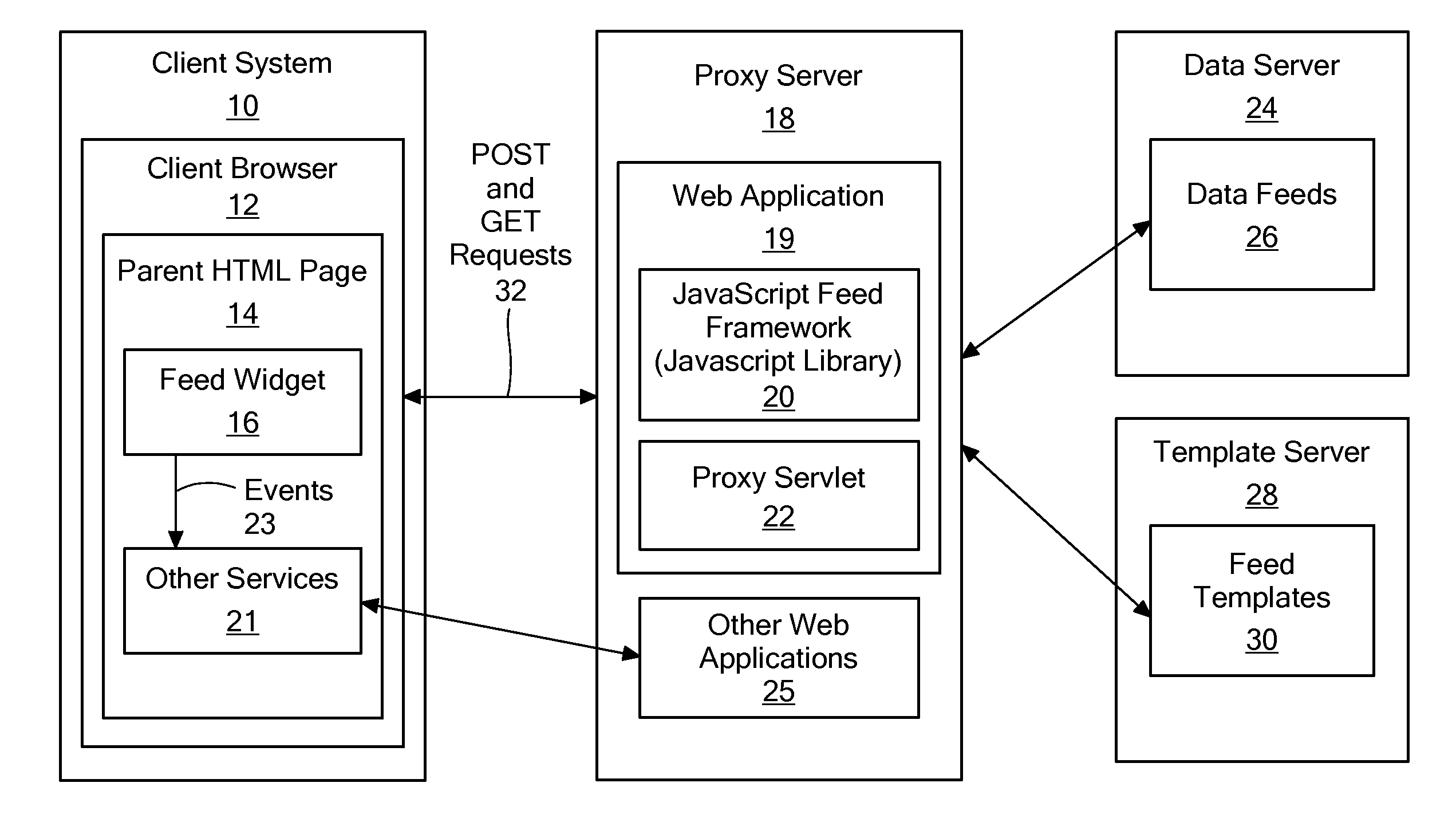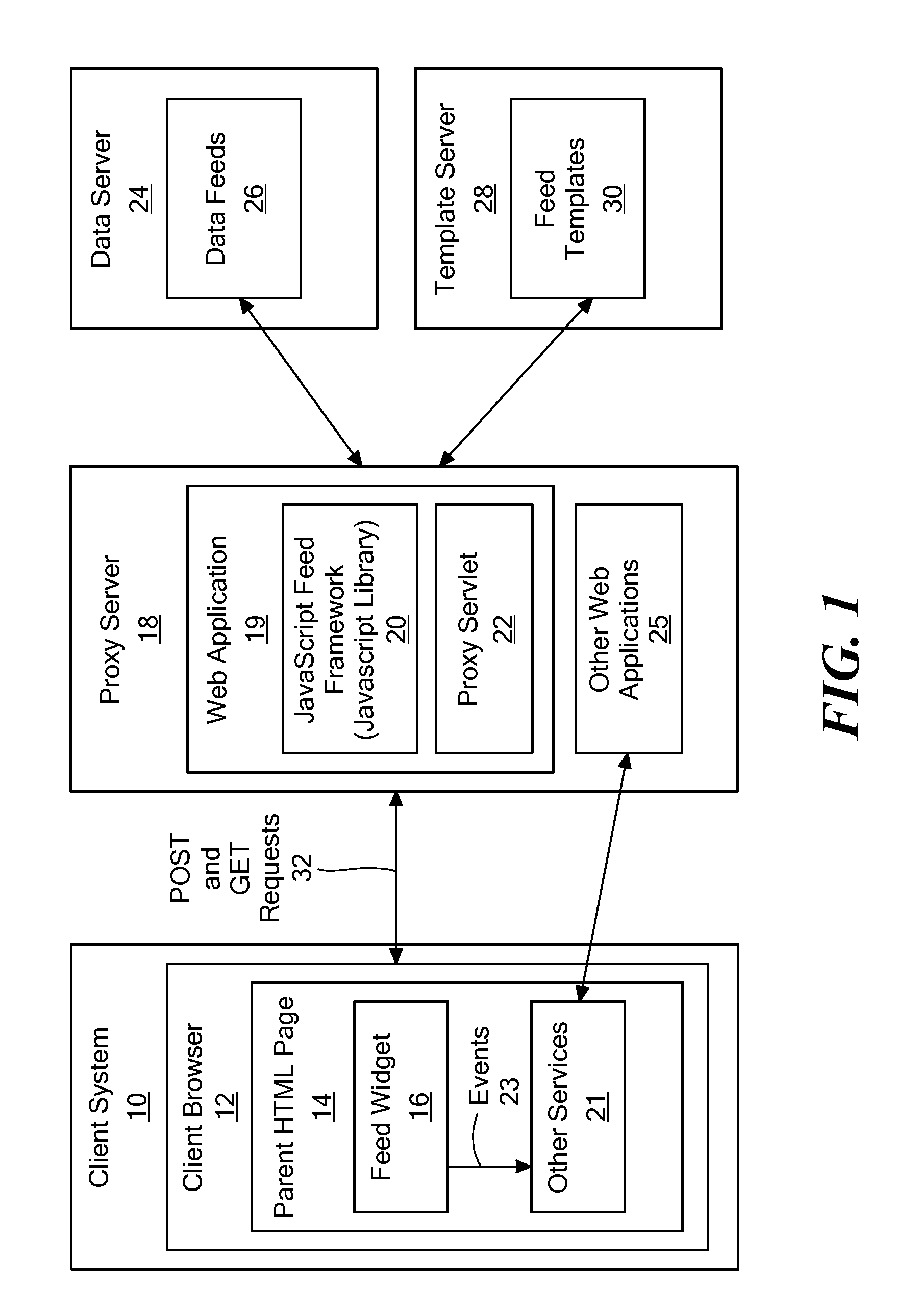Method and system for providing xml-based asynchronous and interactive feeds for web applications
- Summary
- Abstract
- Description
- Claims
- Application Information
AI Technical Summary
Benefits of technology
Problems solved by technology
Method used
Image
Examples
Embodiment Construction
[0022]FIG. 1 is a block diagram of software and / or hardware components in an illustrative embodiment of the disclosed system. As shown in FIG. 1, a Client System 10 includes a Client Browser 12 in which is loaded a Parent HTML Page 14 that includes a Feed Widget 16. The Feed Widget 16 is an example of a client-side aspect of the disclosed system operable to provide a user interface display of an XML feed. During operation of the Feed Widget 16, Events 23 are generated (e.g. by the Client Browser in response to actions performed by the Feed Widget 16), and these events may be recognized and processed by Other Services 21. The Events 23 allow the Other Services 21 to access data collected and processed by the Feed Widget 16, in order to provide additional aspects of a user interface display of an XML feed received and formatted through the Feed Widget 16.
[0023]The Client Browser 12 operates to render the Parent HTML Page 14, including the display of the XML feed associated with the Fe...
PUM
 Login to View More
Login to View More Abstract
Description
Claims
Application Information
 Login to View More
Login to View More - R&D
- Intellectual Property
- Life Sciences
- Materials
- Tech Scout
- Unparalleled Data Quality
- Higher Quality Content
- 60% Fewer Hallucinations
Browse by: Latest US Patents, China's latest patents, Technical Efficacy Thesaurus, Application Domain, Technology Topic, Popular Technical Reports.
© 2025 PatSnap. All rights reserved.Legal|Privacy policy|Modern Slavery Act Transparency Statement|Sitemap|About US| Contact US: help@patsnap.com



